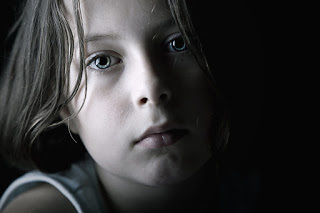Helping Your Kids Get a Grip on Grief (Part 1 of 3)
 Divorce can be devastating, both to you and your children. Younger kids can’t often express or even know how it’s affecting them.
Divorce can be devastating, both to you and your children. Younger kids can’t often express or even know how it’s affecting them. Anticipating and understanding the three phases your child might go through helps you navigate your family through this season of life toward recovery.
First they experience early grief, followed by acute grief and ending with acceptance. We will spend the next three posts exploring these phases. Today, let's talk about Phase 1: Early Grief
Look for these signs of grief early on, soon after they get news of the separation or divorce:
Shock and numbing Separation anxiety where there was none before Alarm or feeling suddenly unsafe Consecutive illnesses back-to-back Denial or disbelief; refusing to acknowledge or talk about it Hyperactivity or impulsive behavior due to stress
In a pinch, some simple, temporary fixes can put a Band-Aid on the behavior. But keep in mind, the following are not solutions—deeper conversations and care are still needed.
Don’t be afraid to bring up the obvious and ask them how they are coping with the break up. When parents don’t talk about it, they assume it must be a taboo topic they must deal with alone.
Buy a watch for the child to give them a sense of control and awareness.
Give older kids a house key to create a sense of ownership and place of stability.
Try flannel bed sheets to calm children at bedtime.
If they are in a new house, play soft music while they sleep, which drowns unfamiliar noises.
As best you can, continue to keep normal bedtime routines they are used to, in order to bring even more stability and normalcy.
Pray with the child when you’re tucking them in. Too often we undervalue the vital need for God’s intervention and healing. More than ever, your child needs to see your faith and dependence on God during trials.
Next week we will discuss Phase 2 and what this looks like for many. But for now, share what practical ideas you have used to help ease the transition for your child.
Published on June 25, 2016 21:00
No comments have been added yet.



